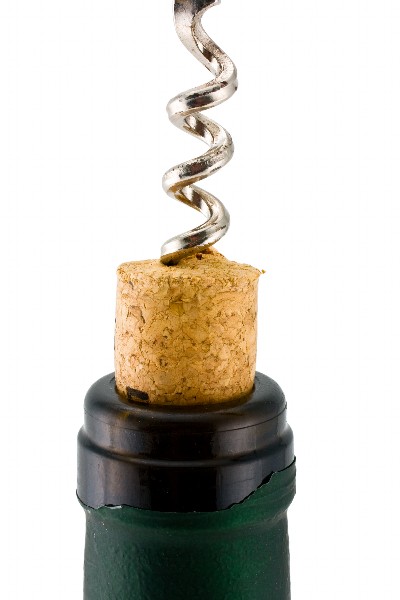Corks and Torront

Before I share my notes about the wines for this column, I would like to discuss a confusing and somewhat controversial subject: wine closures. The use of cork to close a bottle of wine dates to the mid 17th century. Before that, wine was sealed with everything from olive oil to rags to wax. No one knows who developed the method of harvesting the bark of a cork tree, drying it, boiling it and jamming it into a wine bottle.
But one thing is for sure: it worked pretty well in its day. But cork decomposes over time and also is subject to contamination, spoilage and a host of other problems. The last few years has seen the contamination of many wine corks with a chemical called TCA (trichloroanisole). This causes “corked bottles” which often smell like wet cardboard, old blankets and other unappetizing flavors. The industry estimates that 3% - 5% of all corks inserted in the roughly 20 billion bottles of wine annually are bad. Which works out to approximately 600 million to 1 billion bottles of bad wine each year! To bring that to our level as consumers, 1-2 bottles in each case of 12 wines is bad. Sometimes the bottle is only slightly bad and other times it can be undrinkable.
Several alternative closures have been developed including composite cork, synthetic cork, class stoppers and, of course, screw tops. Those of us of a certain age remember the negative connotation of “cheap screwtop wine”. I have one thing to say about that: “GET OVER IT!” That was then and this is now! Ask yourself, what is more important: a good wine which, coincidentally, can be easily opened or some outdated sense of “romance and propriety” which ends up with a bad wine?
By the way, most wine produced in Australia and New Zealand are sealed with screwtops. And they are often very good. You’ll see more and more quality wines from all around the world with screwtops, including my 2 recommendations in this column.
Today’s wines are all Torrontes, a grape mostly grown in Argentina. The wines produced are mostly dry and crisp, although I have seen some late harvest sweet versions. They can range from delicate to medium bodied. They rarely are aged in any oak. I stand by my prediction: Torrontes will be the new Pinot Grigio!
2011 Santa Julia Torrontes $7.5013% alc. Argentina. Plastic cork Fruity nose with flavors of pineapple, honey and other fruit. Ultimately simple with a hot finish.
2012 Crios Torrontes $8.40 14% alc. Argentina. Screwtop This lovely fruity, dry wine is full of flavors of peaches, apricots, lemon, muscat grapes and a spicyness which comes through in the finish. It also is complex enough to have a bit of earthiness. I recommend it for lighter meats (turkey, ham, pork, chicken), seafood and fish. BESTBUY & HIGHLY RECOMMENDED
2010 Sophenia Altosur Torrontes $9.50 13.5% alc. Screwtop Grassy in the nose with pleasant tropical fruit flavors. Crisp and a bit tart.
2010 Zuccardi Seria A Torrontes $10.00 13.5% alc. Screwtop Nose of hay and grass. Grapefruit and oil in the mouth. Simple with a hot finish.
2012 Terrazas Riserva Torrontes $15.65 13.5% alc. Argentina. Screwtop Full bodied. Floral hints with complex flavors. A bit grassy but well balanced. Other flavors of ginger, apple and passion fruit. If you feel like an unoaked or lighter chardonnay, try this instead. Should go well with pastas of all sorts, especially alfredo or seafood pasta. HIGHLY RECOMMENDED
M. Stefan has over 20 years experience in the wine trade and has traveled extensively throughout the wine producing regions of the world. His column is a regular feature of La Playa Community. He can be reached at mark@playacommunity.com and appreciates your comments.
Trending Tags
